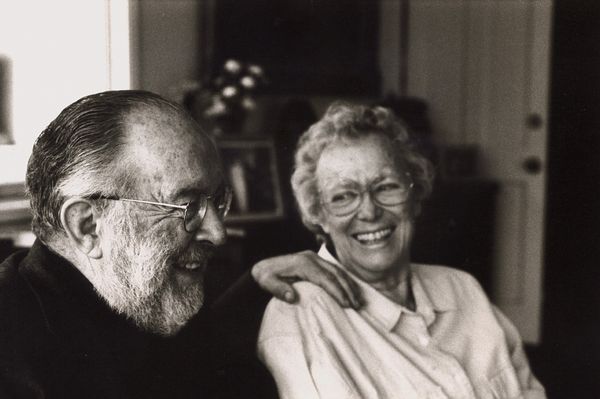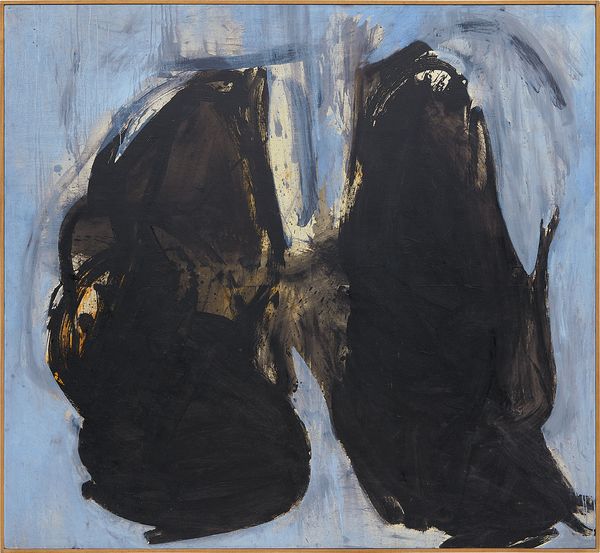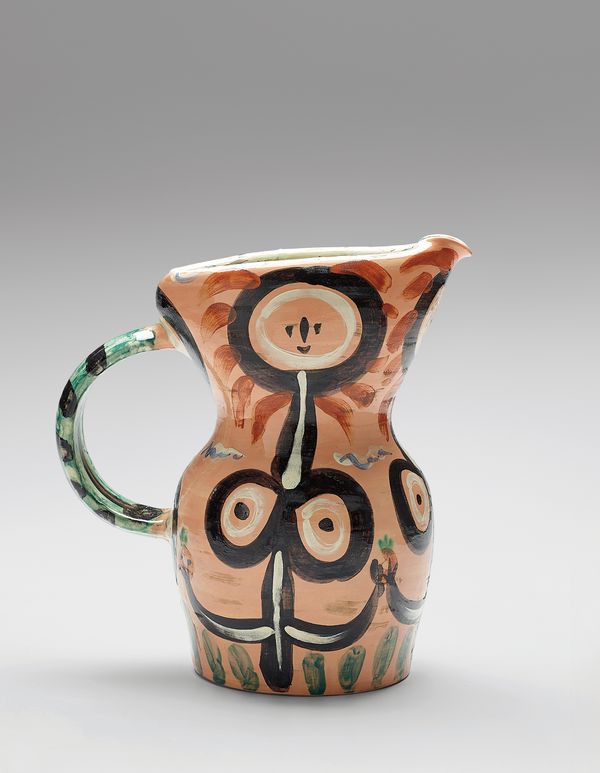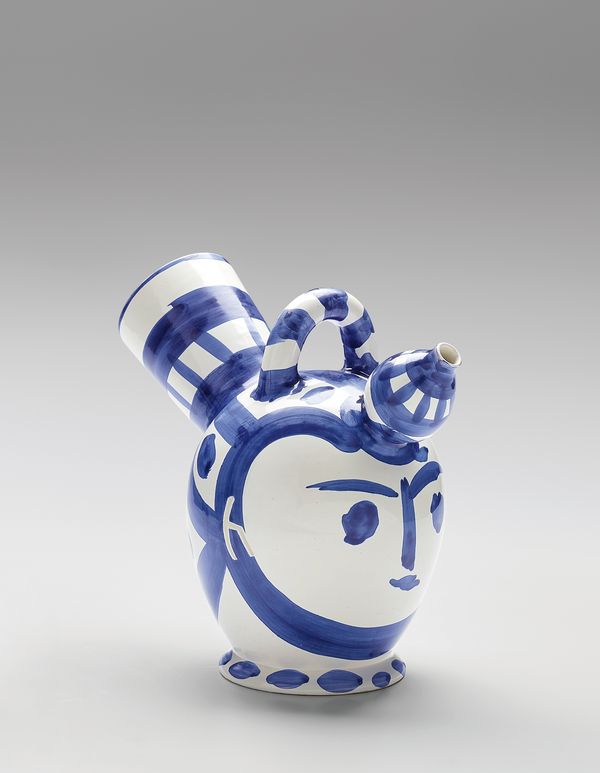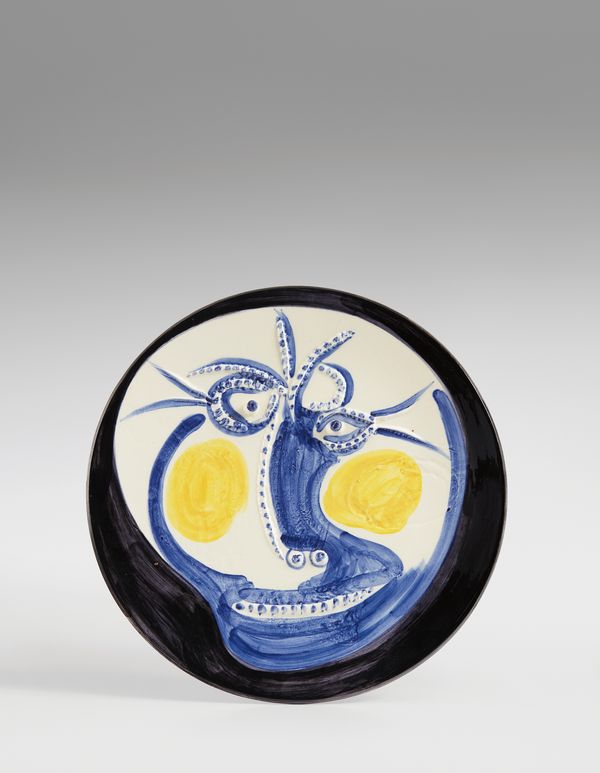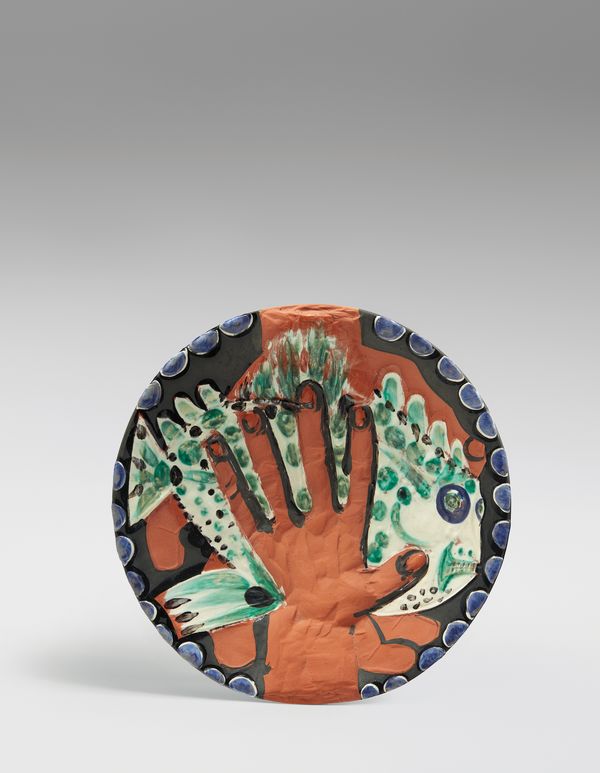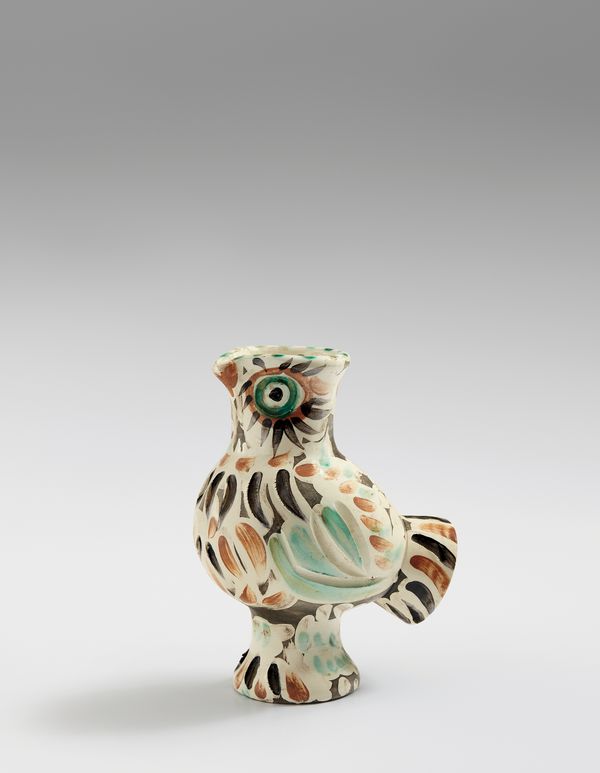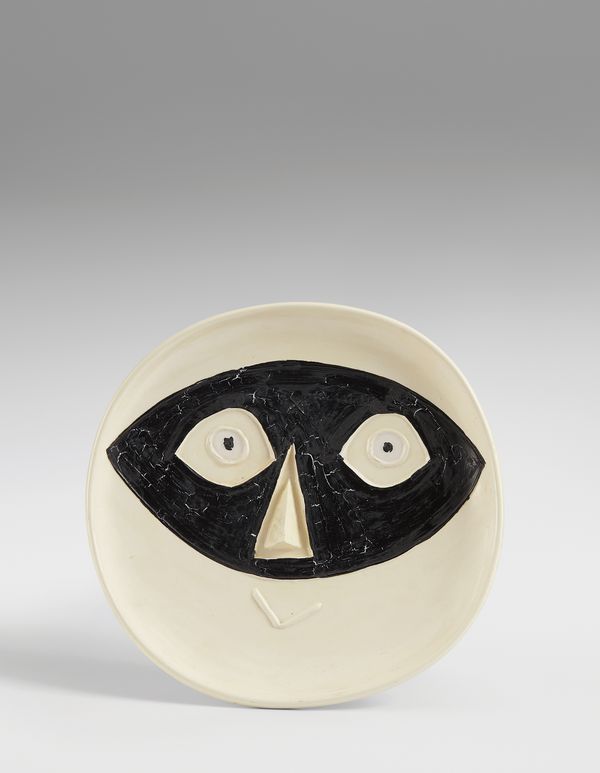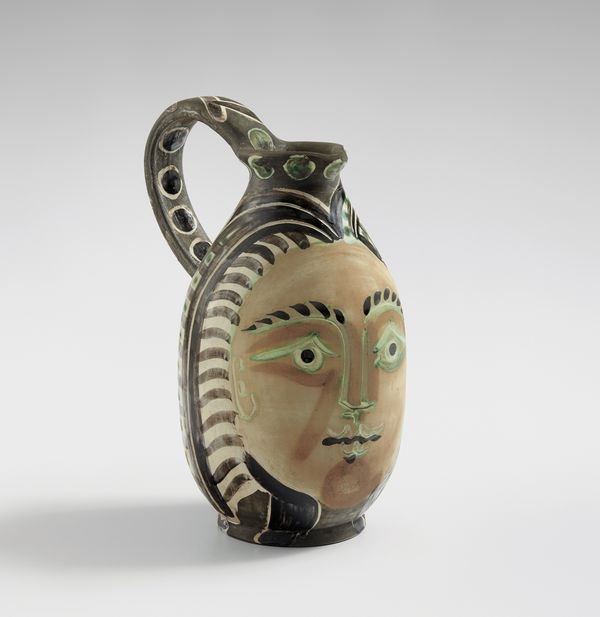Betty and Stanley in their Los Angeles home circa 2000
The collection of Betty and Stanley Sheinbaum illustrates an exceptional vision that was ahead of its time. With works ranging from sculptures by Henry Moore, masterpieces by Robert Motherwell and Richard Diebenkorn, ceramics by Pablo Picasso and the sculptural icon Rondena by Peter Voulkos, among many others, a visit to the couple's Los Angeles residence provided visitors with an eclectic feast for the senses.
Many of these works featured in our auctions this past fall — with Voulkos' Rondena fetching a world auction record for the ceramic artist at $915,000 in December Design and Motherwell's A Sculptor's Picture, with Blue achieving $2,249,000 in our November Evening Sale of 20th Century & Contemporary Art.
Robert Motherwell A Sculptor's Picture, with Blue, painted in 1958.
Initially formed by Betty with her first husband, Hollywood producer Milton Sperling, and later in partnership with political activist Stanley Sheinbaum upon their marriage in 1964, this remarkable collection was largely assembled in the 1950s-'60s. As we approach our first auction of the season in London, we look back at the "Hollywood Story" of Betty Sheinbaum and look forward to the nine Picasso ceramics from her collection that lead Evening & Day Editions.
A Hollywood Story
Heiress to one of the most successful motion picture and television dynasties in the world, Betty Sheinbaum was born to Harry Warner in New York City in 1920 as the youngest of two siblings. At that time, what was to become Warner Bros. Pictures was still a fledgling, albeit pioneering, motion picture company that Harry and his brothers Albert, Sam and Jack had founded in Los Angeles in 1918. In these nascent days, Harry handled finance and distribution from New York City while his brothers focused on production. It was only in 1923, thanks to Harry's ability to secure a large loan, that Warner Bros. Pictures, Inc. was officially established — making it one of the first movie studios in the world. Harry, now the first President of the company, moved his family to Los Angeles.

Original Warner Brothers Studio, 1918. Image Hulton Archive/Stringer/ @ Archives at the University of Southern California
The 1920s were a time in which the motion picture industry began to truly flourish, and Hollywood was at its very epicenter. Betty witnessed Warner Bros.' legendary ascent first-hand as it was catapulted to the forefront of the film industry. At age 19, Betty married the up-and-coming screenwriter Milton Sperling, with whom she would have four children. Following the end of World War II, Harry Warner made Sperling a producer at Warner Bros.
While immersed in the glamorous Hollywood scene, Betty forged her path with a distinctive sense of independence, living her life at the junction of art and politics. Long before it was common for women to take on roles other than that of wife and mother, Betty took night courses at the University of California, Los Angeles, and began art school at age thirty.
After many years of ardently following and engaging with the groundbreaking developments in the art world around her, Betty assembled a significant portion of her collection between 1958 and 1962, beginning with maquettes by Henry Moore acquired in London. With her second husband, Stanley Sheinbaum, together they dedicated themselves to human rights, social justice, education, politics and world affairs; this selflessness and dedication was matched by their relationship with art and design, spending significant attention on contemporaneous works of American craft in addition to non-American examples of ceramics and earthenware produced in the 1950s and '60s.
Below, browse their entire selection of editioned ceramics by Pablo Picasso heading to the saleroom in Berkeley Square.
A lot of people buy art to have its value go up and to stick it on the wall and stand back from it. [My mom]...had a collection to live with.
— Karen Sperling
Pablo Picasso Femmes Fleurs (Flower Women), 1947. White earthenware pitcher, painted in colors with brushed glaze. Estimate £12,000 - 18,000.
Pablo Picasso Pichet à glace (Ice Pitcher), 1952. White earthenware pitcher, painted in blue with glaze. Estimate £12,000 - 18,000.
Pablo Picasso Visage (Face), 1960. White earthenware round plate, painted in colors with partial brushed glaze. Estimate £8,000 - 12,000.
Pablo Picasso Mains au poisson (Hands with Fish), 1953. Red earthenware round dish with engraving, painted in colors with partial brushed glaze. Estimate £4,000 - 6,000.
Pablo Picasso Oiseau polychrome (Polychrome Bird), 1947. White earthenware rectangular dish, painted in colors with boring-rod engraving and colored glazes. Estimate £6,000 - 8,000.
Pablo Picasso Chouette (Wood-Owl), 1969. White earthenware turned vase, painted in colors with boring-rod engraving and partial brushed glaze. Estimate £8,000 - 12,000.
Pablo Picasso Tête au masque (Head with Mask), 1956. White earthenware round dish, painted in white enamel with black and ivory brushed glaze. Estimate £8,000 - 12,000.
Pablo Picasso Paysage (Landscape), 1953. White earthenware round dish, painted in colors with partial brushed glaze. Estimate £4,000 - 6,000.
Pablo Picasso Femme du barbu (Bearded Man's Wife), 1953. White earthenware turned pitcher, painted in colors with knife engraving and partial brushed glaze. Estimate £15,000 - 20,000.
